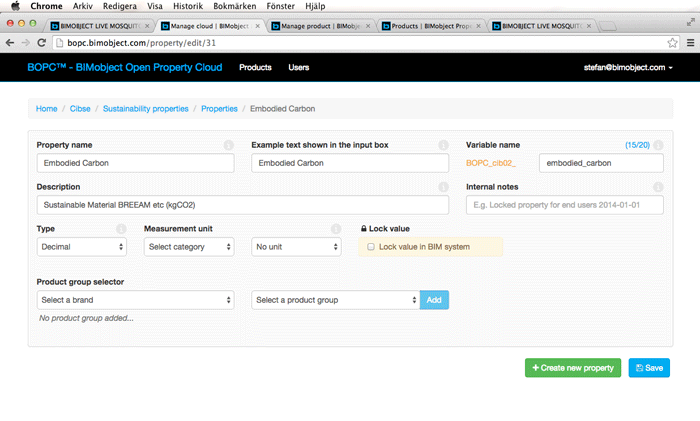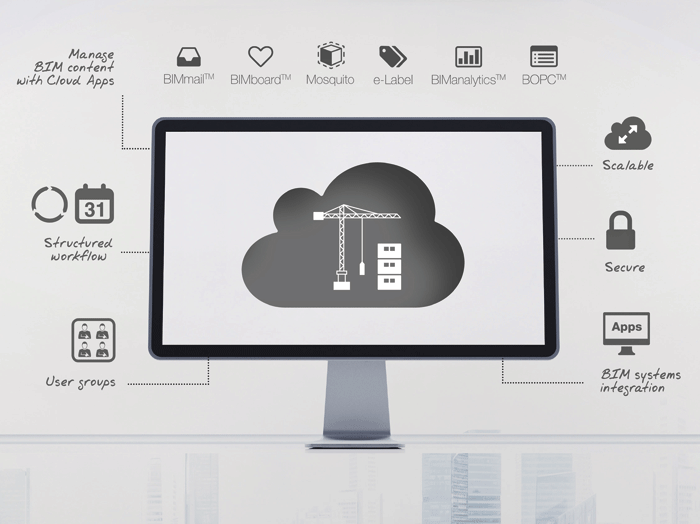BIMobject has developed a new suite of tools to open up its content management system and ease intelligent component creation. By Martyn Day
BIMobject has developed a CMS (Content Management System) that offers manufacturers the service of modelling their components, including all the relevant product information for the BIM process. While the objects are provided free to architects and designers, manufacturers are charged.
In return manufacturers get notification of who downloads an object and when, and have a bi-directional communication system with the users. When objects are contained in a BIM model, architects get notification of any model updates or, if a product is retired, notification of the replacement component.
Users of the BIMobject library report two main benefits: reliable and consistent model quality; and being able to quiz manufacturers directly for technical information.
For the manufacturer the benefit is pretty clear, an idea of what up and coming projects their components are being used in; and indication of future potential orders.
Manufacturers can also see when their products are removed/replaced from design at final specification, providing at least some opportunity to try and cut a deal.
BIMobject has one obvious drawback, which is the same for all BIM component library services: the capacity to digitise the vast catalogues of manufacturer’s components would require an exponential increase in manpower of talented BIM modellers. In a market with a distinct skills shortage, that is a problem.
The logic follows that if you could open up the BIM component creation to more commonly used design tools, the potential number of authors could increase.
In addition, the BIMobject CMS could be packaged up for firms to manage and distribute their own created and managed content, as opposed to those that are clients of BIMobject.
The net result of this broad market thinking from BIMobject is a combination of new authoring products and services to democratise component model creation, add intelligence, rules, and provide a managed distribution infrastructure.
BIMscript
BIMscript is a subset of the C programming language. It is an open and free scripting and authoring language that can describe products and components with intelligence, creating configurable objects, calculations, product logic, level of detail (with several levels of complexity of geometry and geometry combinations), and includes a huge range of properties and attributes.
The script can output components in Autodesk, Graphisoft, and Trimble formats, with more promised in the future.
It also generates objects in commonly used formats such as IFC, 3DS, DWG and WebGL. This is a powerful open definition for the BIM community, that transcends the proprietary lock on BIM data.
The majority of manufactured AEC elements are designed in 3D CAD systems, which are integrated into fabrication systems. Typically manufacturers have 3D models for this purpose and these formats do not lend themselves for use in BIM modellers; they are too detailed and lack the relevant ‘BIM’ product information.
LENA
BIMobject recognised that McNeel Associates’ popular Rhino modeller is low cost, popular and can open the majority of industry 3D CAD formats (CATIA, SolidWorks, Solid Edge, IGES, NX, JT, Inventor and Pro/E). Using the Windows version as a platform, BIMobject has developed a plug-in tool called LENA to assist in the creation of BIM components.
LENA creates BIMscript from Rhino geometry. The interface is easy to use, from selecting the required geometry, adding materials etc. It includes all syntax controls, testing, creation of the generated BIMscript. The result is parametric and intelligent BIM objects from Mechanical CAD data, which automatically connect to the BIMobject Cloud providing a seamless workflow to publish objects and also includes connection to the corresponding product information stored in property sets in the BIMobject Cloud.
Mosquito
Both these products were launched last year, prior to LENA and BIMscript, but now both contribute to this attempt to democratise BIM component creation.
Mosquito, now in its second generation, enables BIM components to be created directly in the BIMobject cloud platform, and then published. In its first iteration it could only create rectilinear geometry but this has been improved. Textures can be added and it supports bulk uploads from database or Excel-driven parameters. Mosquito is another potential way to speed up the mass population of a BIM cloud with product variants.

BOPC
BOPC (BIMobject Open Property Cloud technology), pronounced ‘bops’, are a way to add extended properties to objects, such as parameters, metadata or attributes, via the cloud and enable the addition of properties post-creation. Manufacturers or BIM firms can add additional visible properties to their objects, or add hidden properties to objects to drive logistics and purchasing at a later stage in the process.

Hercules
BIMobject Hercules is its cloud Content Management System (CMS) packaged up for larger contracting, construction, consultant and architectural companies. Hercules cloud is offered as a yearly subscription.
Hercules enables firms to self-manage, develop, publish and control their own BIM content in a cloud-based environment; Revit, ArchiCAD, SketchUp, Bentley AECOSIM (through RVT format) and AutoCAD.
It enables a single source of content, with version handling, structured data, support for languages and various classification systems. Hercules comes with the complete suite of BIMobject Cloud Apps: Mosquito, BOPC and BIManalytics (Cloud traffic). It provides multiple Project Clouds (private or public cloud) together with Product Administration. Existing manufactured components on BIMobject’s site can be integrated and made available into any Hercules set up.

Conclusion
Hercules is squarely aimed at very large organisations with thousands of families of parts to manage, but I hope BIMobject comes up with similar platform as a service (PaaS) that smaller architects could afford or use.
BIMscript and LENA are the really ingenious elements, opening up manufacturers’ 3D CAD files to speed BIM component creation. These two innovations admittedly help solve BIMobjects’ own bandwidth issues for content creation but they also provide simple tools for turning high quality, intelligent product geometry and data into the right BIM formats at a lower cost.
There is an added benefit, in that it helps Hercules customers generate their own content in conjunction with Mosquito and BOPC. Even with these tools, manufacturers still do not know what the AEC industry wants from BIM models; and they are still likely to over-detail models and make them too large, or include too much product information.
At least in the BIM component delivery services industry there is someone to advise manufacturers to have restraint. Now BIMobject customers can make their own BIM components straight from CAD systems, I have some concerns we will get a lot of content that is just too big to use, but I guess it is better than not having the models at all — after all, geometry can always be optimised.
If you enjoyed this article, subscribe to AEC Magazine for FREE






